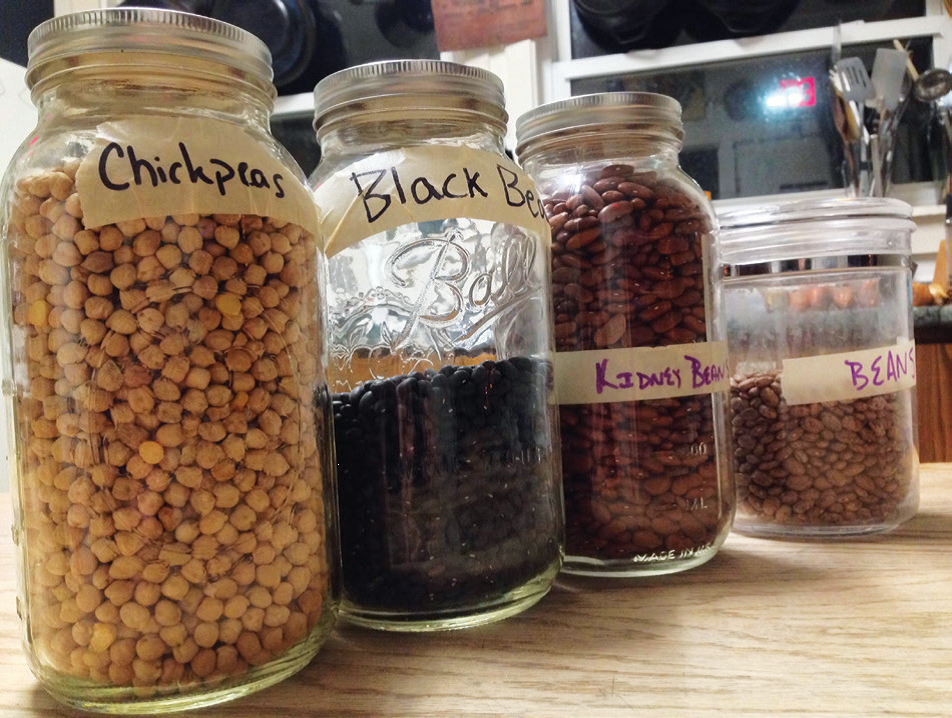The winter is a tough time for veggies. Oftentimes, we at the Green House need to turn to a trusted friend to provide a nutrition and protein-packed meal for our nightly dinners: beans! Beans come in all shapes and sizes, from pinto to red and chickpea to lima. As I learned this week during the Taco Bar on Wednesday, Dana loves beans too (full disclaimer: somehow it took me three and a half years to find out that the taco bar was a thing. I now regret 97% of my college experience. The 3% I don’t regret was waiting in the Taco Bar line that went halfway to Park Street). As Dana demonstrated to me this week (and apparently to everyone else basically every time I didn’t go to Dana over the last four years), refried beans look terrifying and taste delicious. Why do they taste delicious, you ask? It’s because in order to make them, you first cook the beans, then add salt and lots of spices and fry those puppies up. Canola oil never tasted so good! But what else can be done with beans?
So far this semester, the house has served black bean burgers, falafel (made with chickpeas, also known as garbanzo beans), black bean hummus, black bean chili galore, hearty pinto bean soup, black bean brownies (for all you gluten-free folks out there), curried chickpeas, and of course, a taco bar. We like beans here, especially in the winter when the food coming off the farm is limited to just roots, veggies, and cabbage. Our beans are bulk-ordered in 10 to 25-pound bags from a regional distributor. Our beans are also stellar at igniting the spark that your digestion system never wanted (ok, so that’s all beans). This week when my cook partner and I cooked, we were strongly suggested, or perhaps demanded, to make sure there were no beans in our meal. For our guests who come once a week, a hefty serving of beans will do the soul good. For those who eat at the house everyday, some weeks trend towards the excessive use of beans, which equates to overly vocal digestive systems.
Cooking beans is also an exciting adventure. Most require a long period of soaking, seven to eight hours, prior to cooking for one to two hours. Who’s got that kind of time lying around? I sure don’t. Enter, the pressure cooker! This hulking pot with a lid that seals via a rubber gasket is the way to cook beans nice and fast, with no pre-soak, often in half the time. Measure out the correct amount of beans (always, dear god always, less than you think you’ll need. No one needs the Great Lentil Overestimate that resulted in lentils for every day of February 2014). Add your beans and water to the pressure cooker, seal that puppy up, and set the burner to high. Our pressure cooker has a little valve on top that gets covered by a weight.
After things are nice and toasty inside the pot, this weight will jiggle and hiss aggressively while the beans are at “pressure.” A great way to explode boiling beans on yourself and half the kitchen is to open the pressure cooker while at pressure. Trust me. Do. Not. Do. That. Turn the stove off, remove the weight, and let the steam that’s pent up inside blast out in a wild display of the powers of chemistry. Place a ping-pong ball into this torrent of ferociously hot air and watch it magically levitate. When the ball falls, the pressure is gone, and you can safely gain access to your now-cooked beans without the risk of inducing serious bodily harm.
Clearly, beans are awesome. They are such joyous fun to cook and can make innumerable fabulous recipes. They also make you conspicuously aware of your small and large intestine if they are the only thing you eat for three weeks. Next time the Taco Bar exists (which I’m told is more than once every four years, but I’m not convinced), heap a pile of refried beans and black beans on your taco and enjoy!



